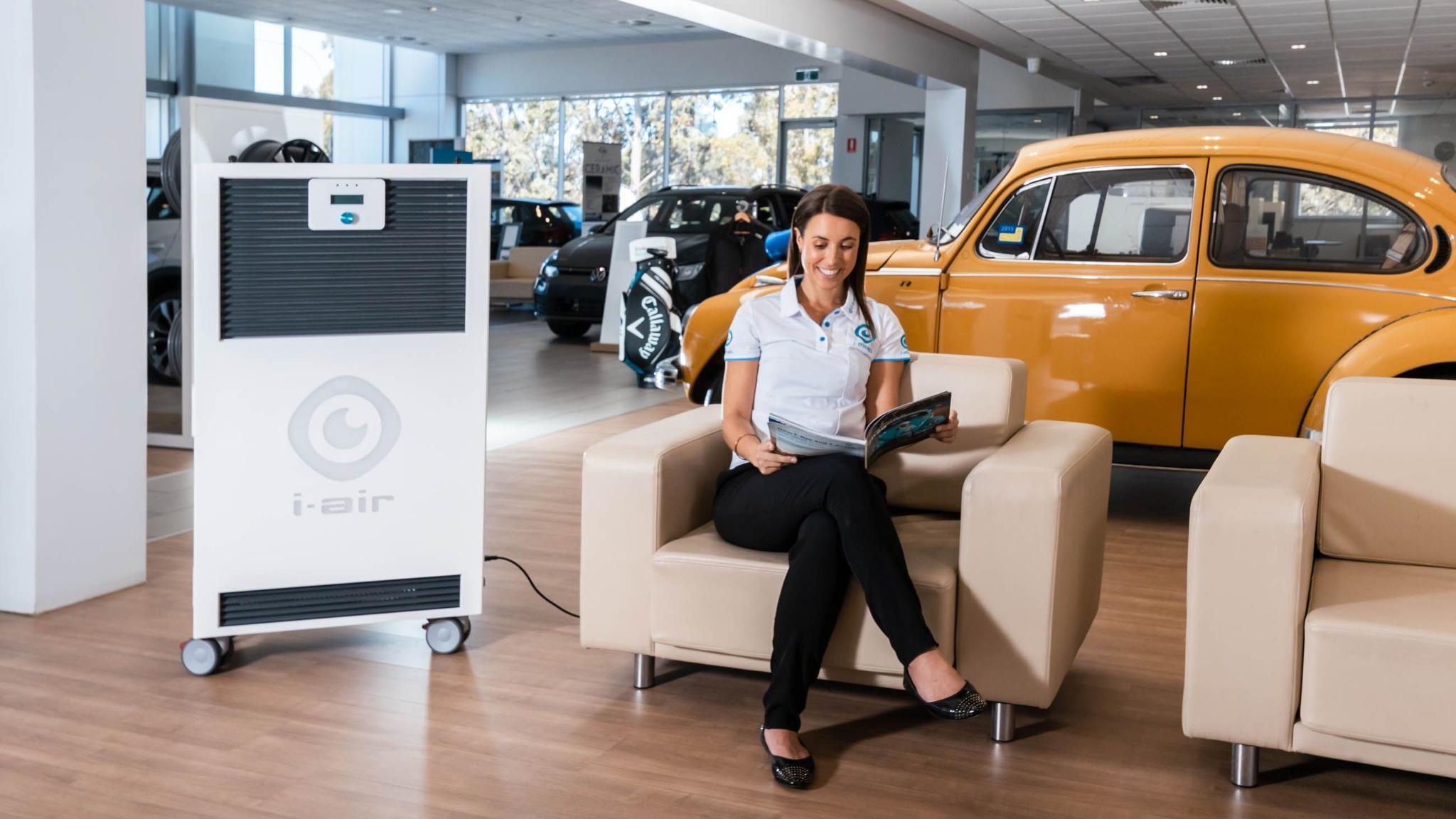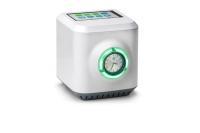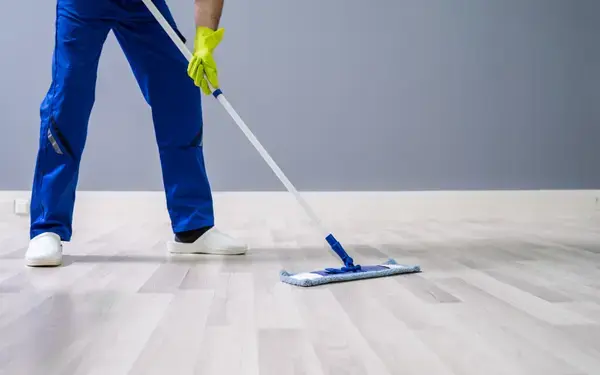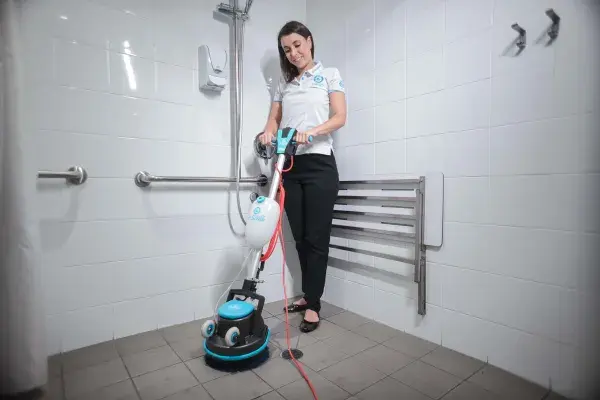You are reading: Air Quality Explained: How Clean Is The Air You’re Working In?
11 August 2022
6min read time
Brooke Payne
Air Quality Explained: How Clean Is The Air You’re Working In?
Share:

Key Insights
- The air can feel dirty because of a mixture of solid and liquid particles, which includes dust, dirt, soot, smoke, and drops of liquid
- Paints, cleaning detergents, building materials, cosmetic products, and pesticides from paints and other liquids can also make the air contaminated
- Microbiological contaminants are also contributing factors as they can consist of bacteria, viruses, and moulds which arise from waste containers, kitchens, and other highly infectious environments
Did you know that the air quality of your indoor office can be up to 5-10 times worse than outdoors?
Think about it - you’re spending 8 hours a day in close quarters with other people, circulating the same air that carries a host of infectious and toxic contaminants.
While the air quality of your workplace is pretty gross to think about, ignoring it could be costing you hours of productivity (and even your life).
Whether you work alone as a cleaner or are returning to work on a bustling office floor, here’s what you should know about the air you’re breathing in on a day-to-day basis.
Need a solution to an air quality problem in your office? Ask us about the i-air.

What makes the air ‘dirty’?
If you’re constantly feeling sick but can’t pin the cause down to any pre-existing health conditions or lifestyle choices, it could be that you’re spending all day in a toxic workplace environment (literally!)
There are three culprits at play when it comes to bad air quality:
Particulate matter.
This is a mixture of solid and liquid particles, which includes dust, dirt, soot, smoke, and drops of liquid. Particulate matter pollutants tend to come from heavy industrial pollution and vehicle exhaust fumes.
Volatile Organic Compounds (VOCs).
These are a group of gaseous contaminants emitted from solids and liquids, often from commonly-used products such as paints, cleaning detergents, building materials, cosmetic products, and pesticides.
Microbiological contaminants.
These consist of bacteria, viruses, and moulds which arise from waste containers, kitchens, and other highly infectious environments.
The amount of each pollutant that is present in the air really depends on your workplace environment and the people present. For example, if your office is situated on a busy highway road, you could be breathing in a lot of particulate matter, thanks to all the cars idling and driving past. Or, if you work the reception in a doctor’s office, you could be sitting in a thick cloud of bugs that is replenished with each rush of patients that enter the waiting room.
The health effects of bad air quality
Stale air isn’t just stuffy and unpleasant smelling; it can trigger existing allergies, respiratory conditions, and other side effects which can, over time, have a serious impact on your mental and physical health.
The typical symptoms of bad air quality, sometimes diagnosed as “sick building syndrome”, can include:
- Dry and irritated eyes, nose, throat, and skin
- Sore throat, coughing and sneezing
- Congested sinuses
- Headaches
- Fatigue
Naturally, the long-term effects of poor air quality can also lead to increased absenteeism and a decrease in employee productivity (how can one do or think about anything with a thumping headache or lingering cold?) The case for improving indoor air quality to increase workplace productivity and happiness has been backed up by numerous studies. According to a study conducted by SUNY Upstate Medical University, people who worked in environments with clean indoor air scored 61% higher on cognitive function. Besides these clear health benefits, having cleaner indoor air is also conducive to a more pleasant smelling environment!

Could a commercial air purifier be the solution?
While you could open more windows, put on a mask, or implement a more strict surface cleaning regime, sometimes these options just aren’t practical or effective enough in improving the air quality in certain working environments, which is why more and more business owners are turning to commercial air purifiers.
Read: What are the benefits of commercial air purifiers in our schools?
At i-team, we’re proud to have supplied workplaces in industries ranging from healthcare to hospitality with the i-air PRO . But what makes it different from other conventional air purifiers? It's all in the unique air filtration and sterilisation technology that we've built into the i-air PRO. The i-air PRO is equipped with a medical-grade HEPA H14 filter, which filters out 99.99% of all particles that measure 0.2 microns in diameter - this includes disease-causing microbes and bacteria. Thanks to the titanium dioxide coated light bulbs, the air is converted into a hydrogen peroxide gas, which cleans the filter - ultimately making the H14 a self-cleaning filter. Together with the very large surface area of the H14 filter, makes the i-air an ultra-low maintenance air purifier.
The i-air industrial air purifier breaks down VOC’s (Volatile Organic Compounds) to harmless CO2 and H20. Comparable devices usually only absorb odours and VOC’s on their carbon filter, while the i-air neutralizes and destroys all dangerous microbes. While many air purifiers rely solely on filtration, the i-air PRO goes a step further with the addition of powerful UV lamps and a patented air circulation chamber to ensure all particule are exposed to a full 2 seconds of germ-killing UVC light, ensuring harmful pathogens do not build up on filters. This prevents germ colonies from forming on the i-air PRO’s self-cleaning filter, which is ultimately a more hygienic, safe, and low maintenance solution. Powerful enough to purify up to 500m2 of air per hour, the i-air PRO is ideal for larger commercial buildings and workspaces.
Want to learn more about the i-air PRO ? Get in touch with our team today!
How does the i-air disinfect the air?
Media and Insights
Join the movement that's changing what clean means.
Be part of a cleaner world. Get a live demo at a time that suits you.
Book a Demo










